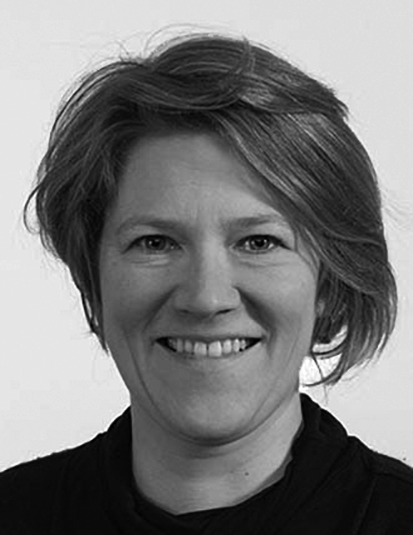A memorial for Haiyan village
The restoration of the mud house and the artistic installation are an enhancement of the local architectural and intangible heritage. The village is changing. Traditional architecture and contemporary lifestyles are colliding. Today, questioning memory means offering villagers a time and space to see fragments of the past and reflect on their becoming.
The restoration work uses traditional building methods and ecologically responsible materials: lime-straw rendering on the walls and a raw earth floor. The airiness of the wooden framework, carried imperceptibly by the side walls, is accentuated by the removal of the floor. A fisherman's net hangs in the center of the room, inviting visitors to move their bodies in two motions: turning around it and looking up.
The house is a universal shelter. It is the place of memories and intimacy. The thickness of the mud walls creates a solid, protective envelope that reinforces the experience of interiority. At the origin of the dwelling, a fireplace and a bed as vital elements. No view of the outside world. Just a door to enter. The volume is filled with the distant lapping of the lake. Touches of light pierce the roof and are reflected on the walls. The space is transcended and invites reverie.
The project is a game of representation, an abstraction of the past life of the villagers and their craft activities. The person who lived here left traces, and his presence is evanescent. But these footprints only take on meaning through the image of the ordinary and commonplace that they conjure up. They symbolize the lives of all of us, and so appeal to the collective memory. Traces of the real, the past, the imaginary and the present coexist to tell the story of the inhabitants.
海晏村记忆
修复生土房并在其中安装艺术装置,是为了再现与提升地方建筑与非物质文化遗产的价值。海晏村处于变化之中。传统建筑与现代生活方式正在发生碰撞。为村民提供一个时间与空间,意味着对记忆的呼唤,让他们看到过去的碎片,反思未来。
修复工程采用了传统的建筑方法和环保材料:墙壁用草筋泥抹灰,地面用生土铺设。拆除地板后,木框架在侧墙的衬托下更显大气。房间中央悬挂的渔网从两个方向吸引游人的视线:环绕渔网与抬头仰望。
房子是人的庇护所。它是一个承载着记忆和亲密关系的场所。厚重的土墙形成一个坚固的保护,加强了内部空间的体验。追溯住宅的本质,火炉和床是最重要的元素。屋里看不到外面的世界,只有一扇可以进入的门。远处湖水拍岸的声音充满了整个空间。阳光穿透屋顶,在墙壁上留下影子,空间得到升华,引人遐想。
这个项目是一个表现的游戏,是对村民过去生活及其手工艺活动的抽象。在这里生活过的人们留下了痕迹,他们的存在是短暂的。这些痕迹只有通过日常平凡普通的形象表现才具有意义,它们是我们所有人生活的象征,唤起我们的集体记忆。现实、过去、想象和眼前的痕迹共存,讲述着居民们的故事。
Un mémorial pour le village de Haiyan
La restauration de la maison en terre et l’installation artistique sont une valorisation du patrimoine architectural et immatériel local. Le village est en mutation. L’architecture traditionnelle et les modes de vie contemporains s’entrechoquent. Interroger la mémoire nécessite d’offrir aujourd’hui aux villageois un espace-temps pour donner à voir des fragments du passé et méditer sur leur devenir.
La restauration emploie les méthodes de construction traditionnelles et des matériaux éco responsables : enduit chaux-paille aux murs et sol en terre crue. Le côté aérien de la charpente en bois, portée imperceptiblement par les murs latéraux, est accentué par la suppression du plancher. Un filet de pécheur est suspendu au centre de la pièce et invite le visiteur à un double mouvement du corps, tourner autour et lever les yeux.
La maison est un abri universel. Elle est le lieu des souvenirs et de l’intime. L’épaisseur des murs en terre crue créent une enveloppe solide et protectrice qui renforce l’expérience de l’intériorité. A l’origine de l’habitation, un foyer et un lit comme des éléments vitaux. Pas de vues sur l’extérieur. Juste une porte pour entrer. Le volume est empli des clapotis lointains du lac. Des touches de lumière transpercent la toiture et se reflètent sur les murs. L'espace est transcendé et invite à la rêverie.
Le projet est un jeu de représentation, une abstraction de la vie passée des villageois et de leurs activités artisanales. La personne qui a vécu ici a laissé des traces et sa présence est évanescente. Mais ces empreintes ne prennent sens que par l’image de l’ordinaire et du commun qu’elles renvoient. Elles symbolisent la vie de tout un chacun et font ainsi appel à la mémoire collective. Les traces du réél, du passé, de l’imaginaire et du présent coexistent pour conter l’histoire des habitants.

Vassilia Pirierros is a French architect living in Beijing since 2004. She founded Liaison Architects there. She is an associate professor at the School of Architecture of Tianjin University and a visiting professor at the School of Landscape Architecture of the Beijing Forestry University.
Over 20 years, she has been able to observe the evolution of urban policies and architectural practices in China. In 2021, she was awarded first prize of the ’’Design Award for Chengdu Public Aesthetic Space in Community’’. Her recent research focuses on riverbanks renovation in Beijing.
Vassilia Pirierros aims to connect and anchor architecture in the territory and culture, and is committed to an attitude of eco-responsible design whatever the scale of the project. The choice of restoring a traditional mud house for the festival is part of this approach.
Vassilia Pirierros 是一位法国建筑师,自 2004 年起定居北京。她在北京创建了连方建筑设计事务所。同时她也是天津大学建筑学院副教授和北京林业大学园林学院客座教授。
20 多年来,Vassilia Pirierros目睹了中国城市政策和建筑实践的演变。2021 年,她荣获 "成都社区公共美学空间设计奖" 一等奖。Vassilia Pirierros目前的研究关注于北京的河岸改造。
Vassilia Pirierros 的设计目标是将建筑与地域和文化联系起来,无论项目规模大小,她都坚持对生态负责的设计态度。选择修复一座传统的生土房屋来举办艺术节,正是这种态度的体现。
Vassilia Pirierros est une architecte française qui vit à Pékin depuis 2004. Elle y a fondé Liaison Architects. Elle est professeur associée à l'École d'Architecture de l'Université de Tianjin et professeur invitée à l'École d'Architecture du Paysage de l'Université des Forêts de Pékin.
Pendant 20 ans, elle a pu observer l'évolution des politiques urbaines et des pratiques architecturales en Chine. En 2021, elle a reçu le premier prix du '' Design Award for Chengdu Public Aesthetic Space in Community''. Ses recherches récentes se concentrent sur la rénovation des berges à Pékin.
Vassilia Pirierros vise à relier et ancrer l'architecture dans le territoire et la culture, et s'engage dans une attitude de conception éco-responsable quelle que soit l'échelle du projet. Le choix de restaurer une maison traditionnelle en terre pour le festival s'inscrit dans cette démarche.